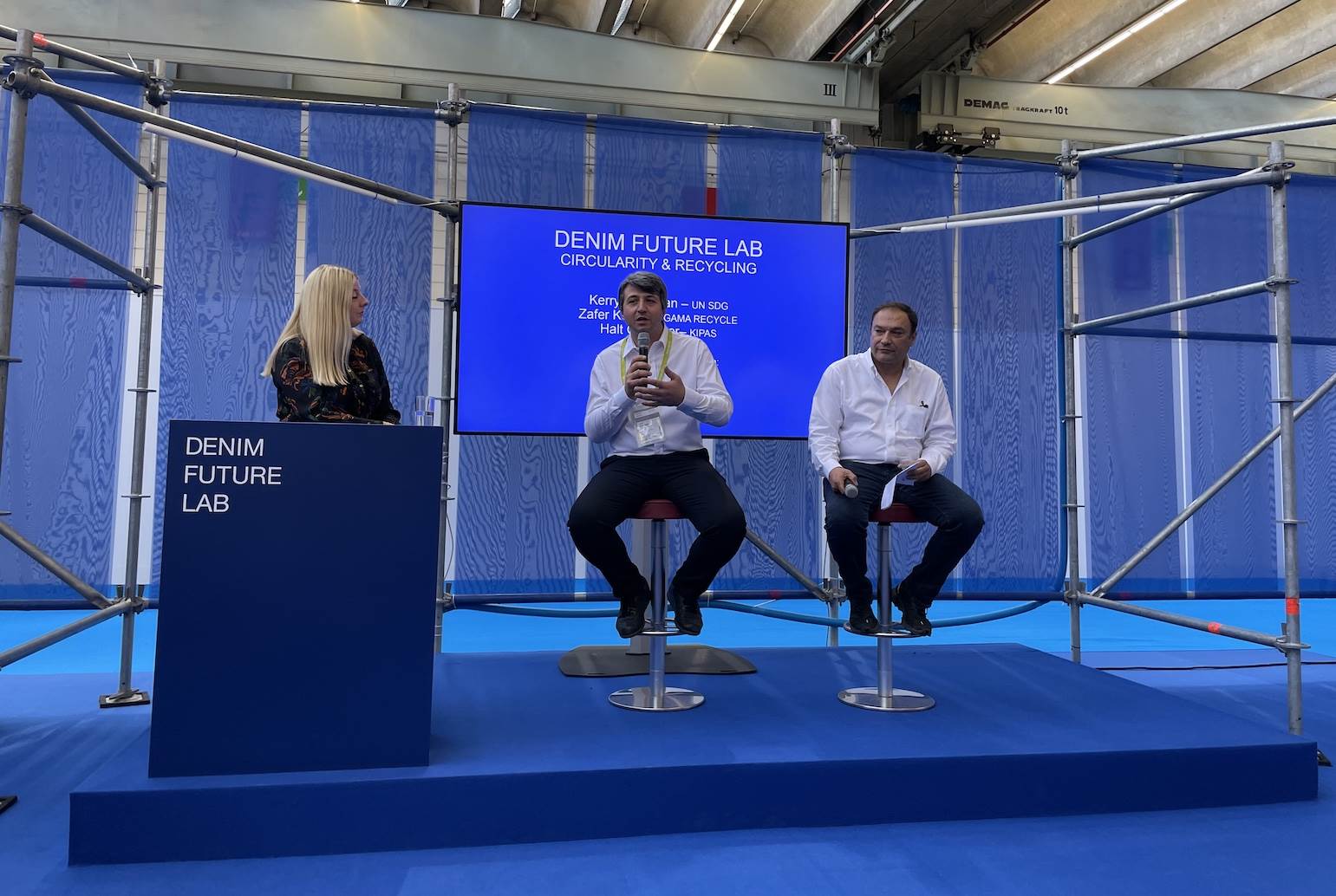Texprocess Future Denim Lab focuses on the future of recycling

The Speakers Corner of the Future Denim Lab at Texprocess in Frankfurt featured a series of talks on a wide array of topics. It was organised with support from the Transformer Foundation. Yesterday, Halit Gümüser, managing director of Kipas Holding, (pictured on the left) and Zafer Kaplan, head of Gama Recycling (pictured on right), took the stage with Kerry Bannigan, from the Fashion Impact Fund as moderator, to discuss denim and circularity.
A vertically integrated denim manufacturer based in Turkey producing 500 tonnes of yarn per day and 8 million meters of denim fabric per month, Kipas also has technical division that exhibited at TechTextil, alongside Texprocess. Mr Gümüser said that the company has set up its own in-house mechanical recycling line.
Gama Recycling, also headquartered in the south-west of Turkey, operates five facilities that recycle textiles and PET plastics. “We process some 300 tonnes of PET flakes per day, which makes us one of the largest PET recyclers in Europe,” said Mr Kaplan.
The two managers agreed on many issues related to recycling. They highlighted the need to increase the quality of garments so that they have more value at the end of their use as clothing. They also stressed the importance of innovation to make a circular economy possible on a wider scale.
“The mechanical processes used to recycle textiles are not new, these technologies have been around for nearly a hundred years. But we face new issues today, one of which is the presence of elastane in jeans, and the shortness of the mechanically recycled fibres,” said Mr Gümüser. He said that the presence of 3% elastane is not a problem during the preparation and shredding phases of used garments, but requires special attention when spun into new yarns.
Gama Recycling has developed what it calls a biochemical recycling process that “dissolves” petrochemical fibres and “purifies” cotton. This solution could address some of the issues related to blended fabrics and is said to be gentler on cotton compared with mechanical recycling. “The biochemical process generates cotton pulp that can then be used to make a lyocell fibre,” said Mr Kaplan.
Mr Kaplan gave an overview of used garment waste generated yearly. He said some 40 million tonnes of clothing are thrown away globally every year and only 7 million tonnes are collected, mostly in countries that have operational waste management infrastructure and logistics.
Of the 7 million tonnes of used clothes that are collected, he said that around 3 million tonnes can be reused, or reworn, and roughly 3.5 million tonnes can neither be reused nor recycled and are therefore incinerated. This leaves just half a million tonnes of clothing that are recycled, though not necessarily into new textile yarns for use in apparel. He estimates that only 100,000 tonnes of used clothes are converted back into new textiles worldwide. Mr Kaplan would like to see retailers develop larger scale takeback systems. He would also like to see recycling certification be restricted to post-consumer waste and not allow companies to make claims when they recycle pre-consumer waste. “Otherwise, there is no incentive to invest in the technologies and infrastructure we need to recycle post-consumer waste,” he told Inside Denim.
Image: from left to right: Kerry Bannigan (UN SDG), Halit Gümüser, managing director Kipas, and Zafer Kaplan, head of Gama Recycling.










